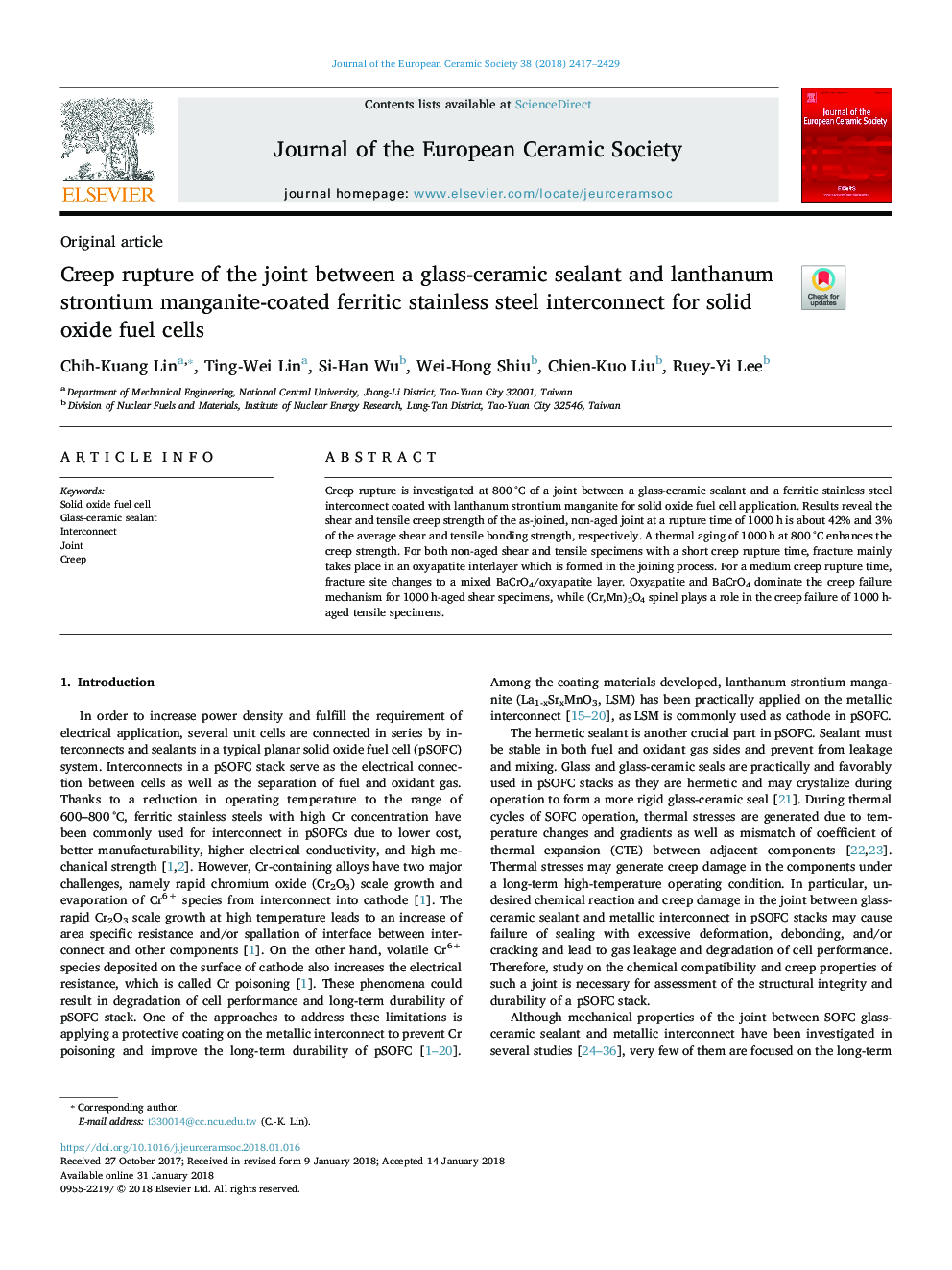| Article ID | Journal | Published Year | Pages | File Type |
|---|---|---|---|---|
| 7898441 | Journal of the European Ceramic Society | 2018 | 13 Pages |
Abstract
Creep rupture is investigated at 800â¯Â°C of a joint between a glass-ceramic sealant and a ferritic stainless steel interconnect coated with lanthanum strontium manganite for solid oxide fuel cell application. Results reveal the shear and tensile creep strength of the as-joined, non-aged joint at a rupture time of 1000â¯h is about 42% and 3% of the average shear and tensile bonding strength, respectively. A thermal aging of 1000â¯h at 800â¯Â°C enhances the creep strength. For both non-aged shear and tensile specimens with a short creep rupture time, fracture mainly takes place in an oxyapatite interlayer which is formed in the joining process. For a medium creep rupture time, fracture site changes to a mixed BaCrO4/oxyapatite layer. Oxyapatite and BaCrO4 dominate the creep failure mechanism for 1000â¯h-aged shear specimens, while (Cr,Mn)3O4 spinel plays a role in the creep failure of 1000â¯h-aged tensile specimens.
Related Topics
Physical Sciences and Engineering
Materials Science
Ceramics and Composites
Authors
Chih-Kuang Lin, Ting-Wei Lin, Si-Han Wu, Wei-Hong Shiu, Chien-Kuo Liu, Ruey-Yi Lee,
